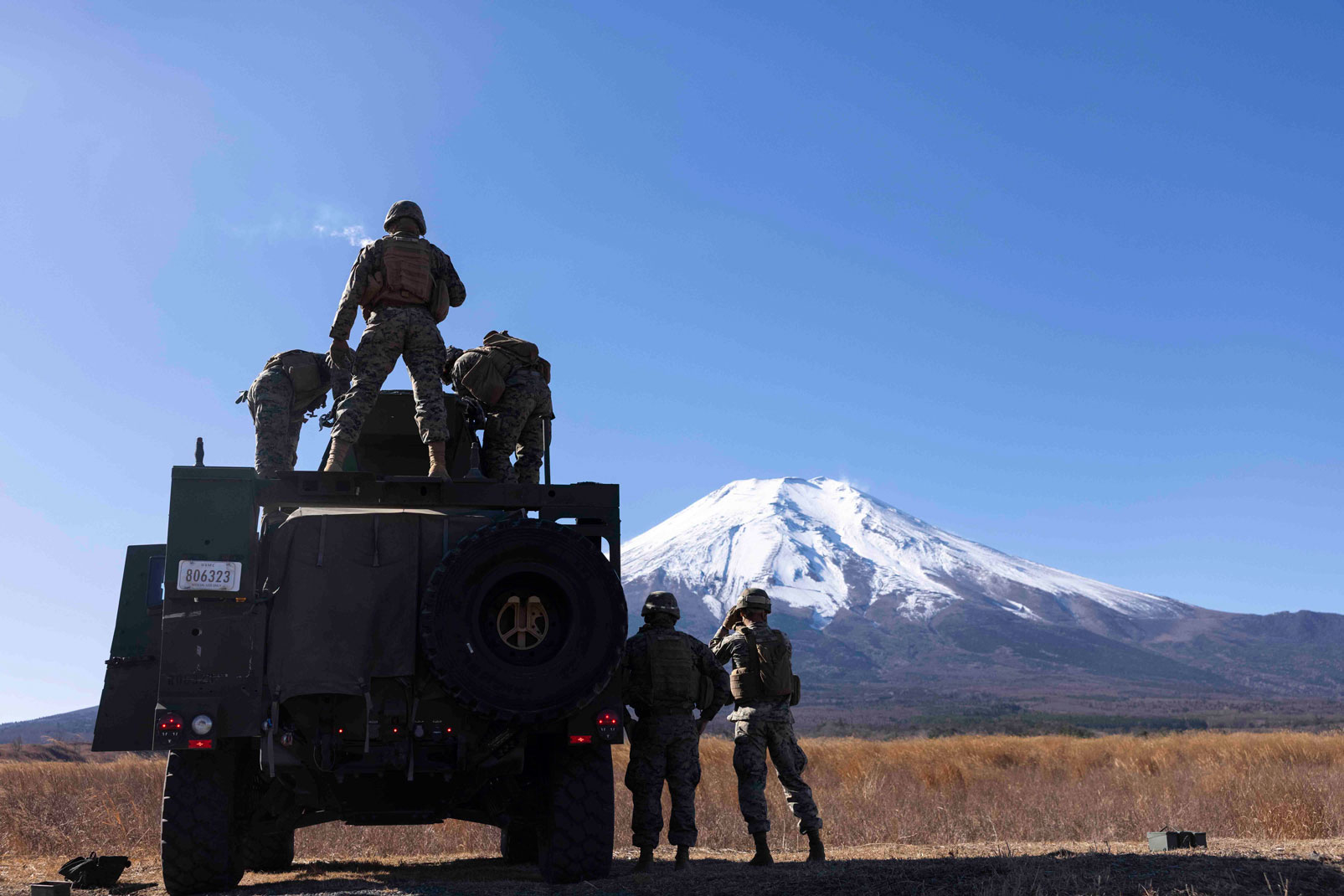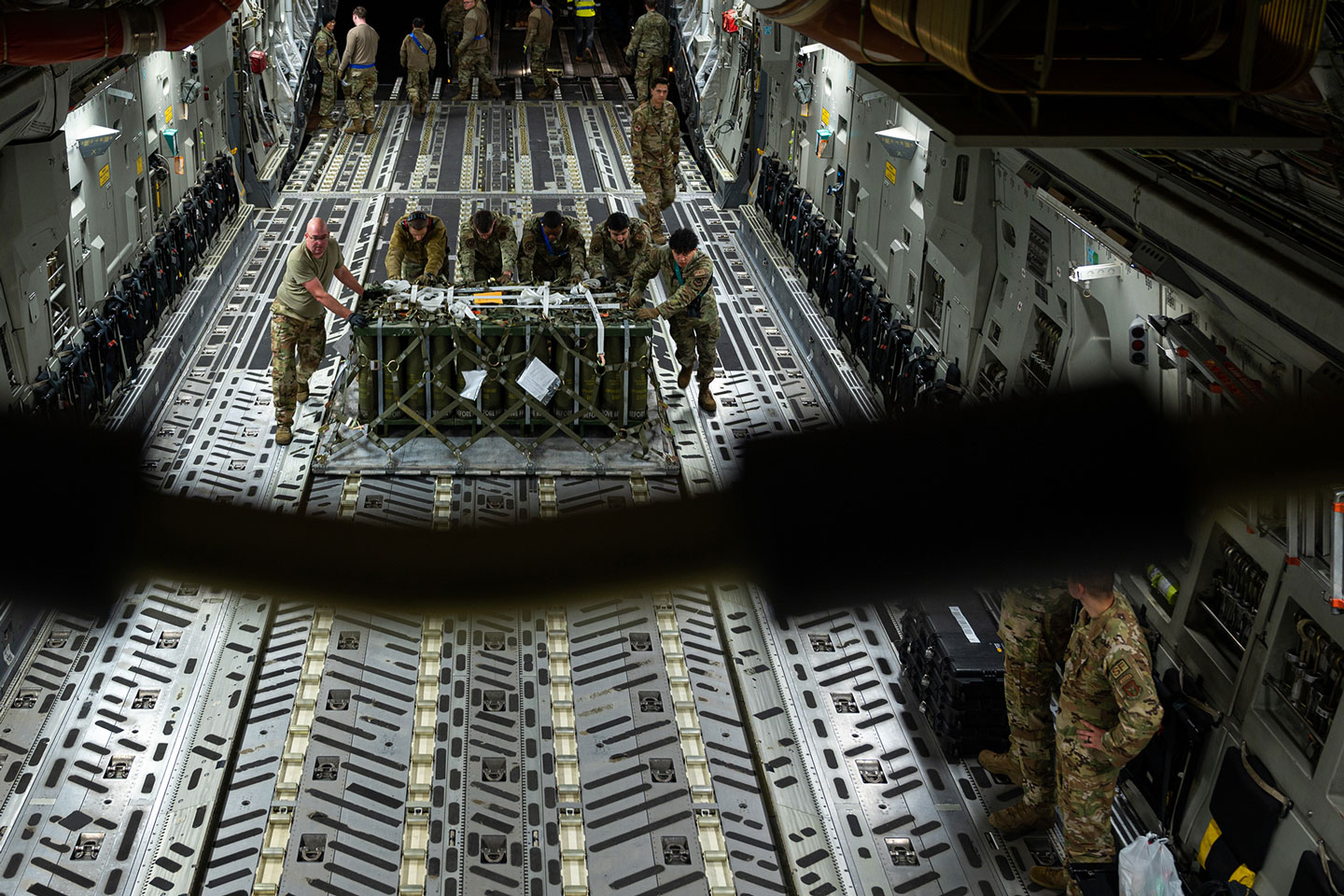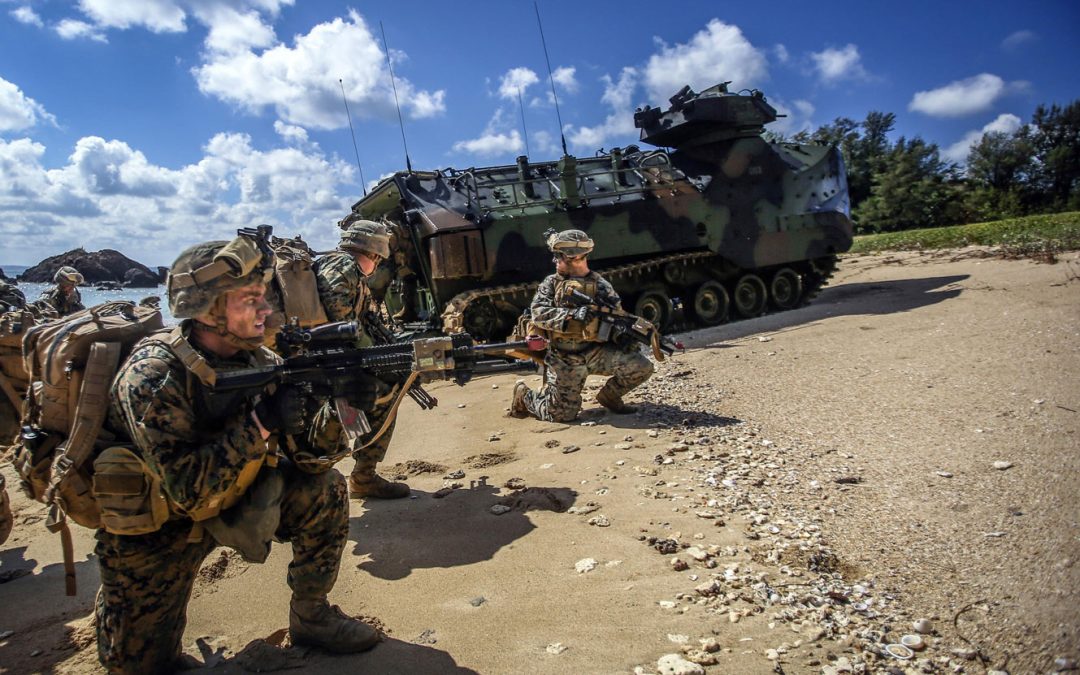The intensifying global conflicts compel Asia Pacific countries to gear up their security forces. Existing instability and fragility in various contexts are further polarizing social and economic inequalities, as well as aggravating maldevelopment across poverty-stricken communities. Rising authoritarianism threatens democracy as leaders gradually resort to their military forces to curb dissent, quell rebellions, and remain in power. In a political perspective, the region itself has yet to face the worst of the already-worsening crises in food, climate, and poverty, the same way donor countries have yet to fulfill their aid obligations to the Global South.
Increasing military presence across Asia Pacific can be prefaced by two things: the individual geopolitical interests of each country in the region, represented by their augmented military spending, and United States (US) imperialism, materialized through sprouting US military bases across the region—the latter, however, can also influence countries to reform their policies and align their national budgets in the context of military expansion. In 2023, the Lowy Institute reports that among the top ten military spenders, seven countries are from the Asia Pacific region, with China in second place, bolstering its budget with a staggering USD 377 billion—almost half of the amount spent by its military superpower counterpart and the number one spender, the US.
Asia Pacific countries are beefing up their defense budgets not only for 2024, but also for the succeeding years. Perennial disputes in territories, borders, and land are cited as the major factor in escalations of militarized zones in the region1. Japan, as one of the donor countries in Asia Pacific, made a ”record-breaking” increase in their military spending to almost USD 302 billion over the next five years amid looming threat from its neighboring East Asian countries, China and North Korea. India, a developing country with donor characteristics, is projected to spend a total of USD 445.7 billion until 2028, although such boost might be inadequate in addressing “security challenges at the Indo-China border.”
These increases in military spending often lead to adverse impacts in both urban and rural areas, further endangering marginalized communities. Women in heavily militarized zones are experiencing outright gender-based violence such as sexual harassment, and counterinsurgency measures directly attacking women human rights defenders. In rural communities, Indigenous Peoples are facing military attacks and landgrabbing to pave the way for development projects that promote extractivism, harm indigenous lands and traditions, and inflict damage to ecosystems. Even in the context of the climate crises, a half-degree increase in warming constitutes a 10-20% increase in the likelihood of armed conflict, which history has already demonstrated as a magnet to a growing military presence. While rich nations such as the US reap the benefits of a profitable global arms trade, people continue to suffer from wars and conflicts, trapped between belligerent states.
The US grip: Conflicts in Asia Pacific

“Marines operate a joint light tactical vehicle-mounted M240B machine gun during a training program at Combined Arms Training Center Camp Fuji, Japan, Nov. 28, 2023.” Photo by Marine Corps Sgt. Alyssa Chuluda/US Department of Defense.
The US remains to be the largest exporter of arms in the world, attesting its role in the worsening militarism in the region. From 2019 to 2023, the US has the highest share of global arms exports accounting for 42% of the overall arms traded globally. Nine of the top ten global recipients (importers) of arms are from the region, accounting for 31% percent of all the US exports in the same period. Some of these top recipients of US arms are Japan, South Korea, and Australia.
The US, however, is not the lone player in the global military arena. Emerging players like China and Russia already took their moves, establishing their bases in several countries and islands and exporting their own artillery, combat aircraft and warships, and armored vehicles and tanks. Despite US defense establishment of reportedly 742 military bases across 82 countries and territories, China and Russia steadily steer geopolitics in the region and gradually build their military bases, too.
Tensions and conflicts across Asia Pacific proliferate as the US, China, and Russia race towards gripping the global economy and resources to serve each of their political interests. In East Asia, US-Taiwan and China find themselves at the crossroads of an imminent war. China reaffirms its agenda to unify Taiwan with the mainland under the “One China” principle, but the latter asserts its sovereignty and reiterates that it will remain independent from the control of the Chinese Communist Party (CCP). Under the Taiwan Relations Act of 1979, the US is obliged to provide arms and “resist any resort to force or other forms of coercion that would jeopardize the security, or social or economic system, of the people of Taiwan.” The result of this geopolitical brawl: “mock attacks” from China launched towards Taiwan as a reminder that the former is ready to wage war against the US and the small, democratic country island.
As seen from Taiwan, it is clearly evident that the US largely influences countries’ defense policies and strategies resulting in armed conflicts and further militarization of communities. The ongoing gruesome genocide of Palestinians, for example, from Gaza to Rafah, has unraveled the lunatic political interests of the US wherein it is simultaneously sending humanitarian aid to Gaza while providing arms to Israel.
Many countries in Asia Pacific have also formed military ties with the US in response to the aggravating conflicts across the region. Brewing tension between China and North Korea, as stated above, propelled Japan to expand its defense budget and strengthen its military capabilities. As one of the top arms recipients of the US, Japan’s military relations with the US can be traced back to the legitimization of the US-Japan Mutual Security Treaty after the Second World War. Introduction and revision of new defense agreements followed, leading to today’s concrete alliance between the two countries. In fact, the US military presence in Japan is so strong that in 2023, 62,802 military personnel were deployed and stationed in Japan—the highest number of US active-duty military personnel in any other country.
India also finds itself on the verge of a century-long tension with its neighboring countries, Pakistan and China. US-India military cooperation has been a monumental and pivotal partnership over the years, which was deemed impossible 20 years ago. As one of the top arms recipients of the US, India has been criticized over its priority for defense budget allocation despite overt needs on health, education, infrastructure development, and other “socio-economic progress” that are anchored on the development of its constituents. Militarism has also dehumanized indigenous and other vulnerable groups in the country, especially in areas where development projects are being built through funding from international financial institutions (IFIs).
Shaping the Pacific and Oceania sub-regions, Australia has also drawn its defense in response to the increasing aggression and tension between the US and China. It stands in between the two nations, tiptoeing in the middle of the scale to balance its political and economic interests. China is Australia’s top trading partner, constituting 36% of the country’s total trade as of 2020. Meanwhile, the US remains the top exporter of arms to Australia, despite a 21% drop in arms imports from 2019 to 2023, and conducts military exercises in several bases across the country. Australia’s defense strategies moving forward, as a result, were developed to respond to the potential US-China conflict.
Coincidentally, the above-mentioned countries boosting their defense mechanisms and beefing up their military budgets over the past decades have formed the Quadrilateral Security Dialogue, or Quad—a security alliance and defense cooperation initiative among the US, Japan, Australia, and India. Initiated in 2007, disintegrated in 2008, and revived in 2021, the Quad, which started as a security dialogue to strengthen the member countries’ military efforts, has deviated towards addressing China’s increasing global presence in geopolitical and economic arenas. Stiftung Wissenschaft und Politik argues that “the security dialogue between the four unequal partners appears more a symptom of regional instability than a remedy for it.” Indeed, much of the defense efforts in Asia Pacific, including the disbursement of military aid, have been instrumentalized and legitimized to support the political interests of donor and authoritarian recipient countries at the expense of people’s rights to peace and security and genuine development.
Militarization of aid in a conflict-ridden future

“Airmen load cargo onto a C-17 Globemaster III at Ramstein Air Base, Germany, Oct. 15, 2023. The mission provided the Israel defense forces with additional resources, including vital munitions, and emphasized the United States’ unwavering and ironclad support for both the Israel defense forces and the Israeli people.” Photo by Air Force Senior Airman Edgar Grimaldo/US Department of Defense
Even the official development assistance (ODA) or aid is not spared from the geopoliticization and militaristic ambitions of Asia Pacific countries, which are mostly backed by the US and other major donor countries. In its 2018 Report, The Reality of Aid Network already highlighted that increasing militarism and conflict in countries could propel huge chunks of public budgets toward military spending. Financing meant to alleviate poverty, provide healthcare, boost education, and strengthen social services is being allocated to defense cooperation instead.
Meanwhile, the region is alarmingly falling behind and regressing in meeting the Sustainable Development Goals (SDGs) of the Agenda 2030. Multiple and intersecting crises of climate, poverty, and hunger are worsening, and the worsening militarism aggravates these upheavals and further impedes the development of the region. Donor governments, IFIs, and the private sector are yet to converge and raise the appropriate and necessary funding to achieve the SDGs, but their priorities are all leaning towards their geopolitical interests.
Over the years, donor countries have consistently failed to collectively meet their ODA obligations. The recent 2023 ODA preliminary numbers revealed that only five countries have dispensed 0.7% of their Gross National Income (GNI) to international development initiatives. However, two of these countries would not have met their goal if in-donor refugee costs (IDRC) were not accounted as ODA. On average, OECD countries only reached 0.37% of the required ODA allocation and as per the OECD website, military aid, including anti-terrorism efforts, is not considered as ODA. Yet, foreign military aid across the globe is still pouring, with the United States disbursing 14% of its total foreign aid in 2022 to military aid, with Israel as the top recipient.
To understand the adverse impacts of militarization of foreign aid, one has to look at the imperialistic US-Israel relationship. Israel is the highest recipient of US aid from 1946 to 2024 worth USD 310 billion in total, with USD 230 billion set aside towards the military—the very same aid that supported and enabled long-standing genocide and occupation of the Palestinian people and their lands. Civil society organizations (CSOs) have long criticized the weaponization of aid as a tool to fund wars, heighten conflicts, and displace people from their homes.
The recently published 2023 Reality of Aid Report highlighted that geopolitical tensions in Asia Pacific are shaping the way aid is delivered in the region. Alliances are being formed, such as the Quad, to contain emerging threats from China and Russia. Donor countries are funding their allies to serve their own interests and build their own tactical military bases in the event of impending wars in the region. All of these are simultaneously carried out while funding and delivering development financing for the Global South. The ironic duality of funding wars on one side of the coin, and delivering aid for people’s development on the other, appears to be a game for the US and its allies—constantly flipping it no matter what the result is, as long as they have the grip over the coin. Furthermore, the Report explained that although financing continuously addresses the development agenda, military aid seizes the “much-needed financing” in the region. It also worsens existing human rights violations in militarized and fragile contexts, largely driven and dictated by geopolitical considerations and decisions of major donor countries.
Asia Pacific is gearing towards a conflict-ridden, militarized future. Militarism in the region will predominantly intensify as the US and its allies make their advances to retain their grip over global territories and resources. To genuinely push the region for development is to demilitarize its states, islands, and communities, and reallocate security-related and military aid towards addressing development issues of poverty, hunger, climate, and human rights. Humanitarian, development, and peace nexus approach should be the core of development initiatives from donor countries and national governments, changing the course of the region and halting instigation of conflicts, fragility, and instability. The longer the players toss the coin, the more people’s livelihoods, survival, and overall development are jeopardized. Only with demilitarization and democratization that aid will rightfully reach those who are left behind.
***
This article is part of a series that offers analyses on the militarization of aid, scrutinizing key players and global impacts. Read our previous pieces here:
- Breaking Down Alliances: The continuing militarization of aid in Asia Pacific
- The Aid Smokescreen: How development is weaponized by the world’s most powerful actors
To learn more about the geopolitical state of Asia Pacific and its relation to the disbursement of ODA, read our recently launched 2023 Reality of Aid Report, which consists of three major chapters, tapping on the political overview of the network; the changes, conflicts, and crises in development cooperation; and eradicating poverty in the changing aid landscape, as well as discussions on regional aid trends (Africa, Latin America and Caribbean, Asia Pacific, European Union, and non-EU members of OECD-DAC).
📢THE @realityofaid REPORT 2023 IS NOW HERE!
⏳This marks 30 years of reporting back on aid and development, encapsulating key shifts in the global aid landscape. Read more about the report here: https://t.co/Sguvj7dbuy
🔗Download the report: https://t.co/iN2m1nCeBs pic.twitter.com/omvK1nKmDZ
— Reality of Aid Network (@realityofaid) May 22, 2024
1Asia Pacific Research Network (2017). Militarism and Democracy in Asia Pacific: Militarist Offensives in the Region and people’s Responses to Build Democracy
Header photo by: Sgt. Aaron Patterson/US Department of Defense. “Marines conduct an amphibious landing at Kin Blue Beach in Okinawa, Japan, Nov. 2, 2017, during Blue Chromite, an exercise to strengthen Navy-Marine Corps capabilities in the Indo-Asia-Pacific region.”

